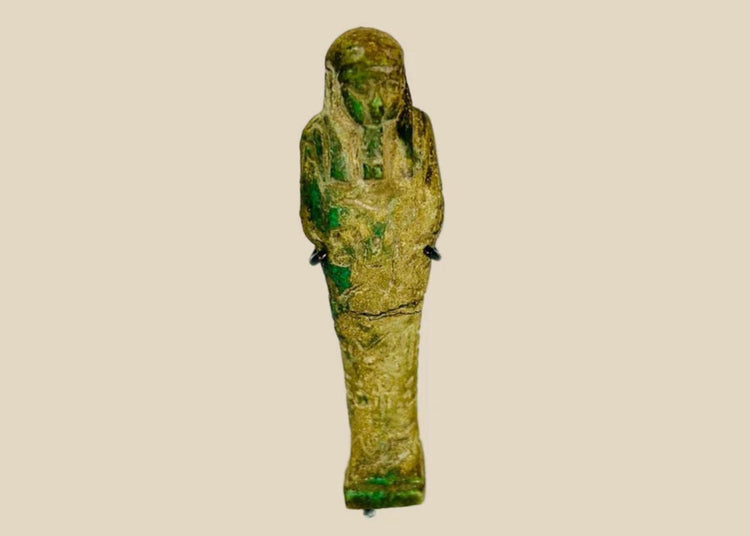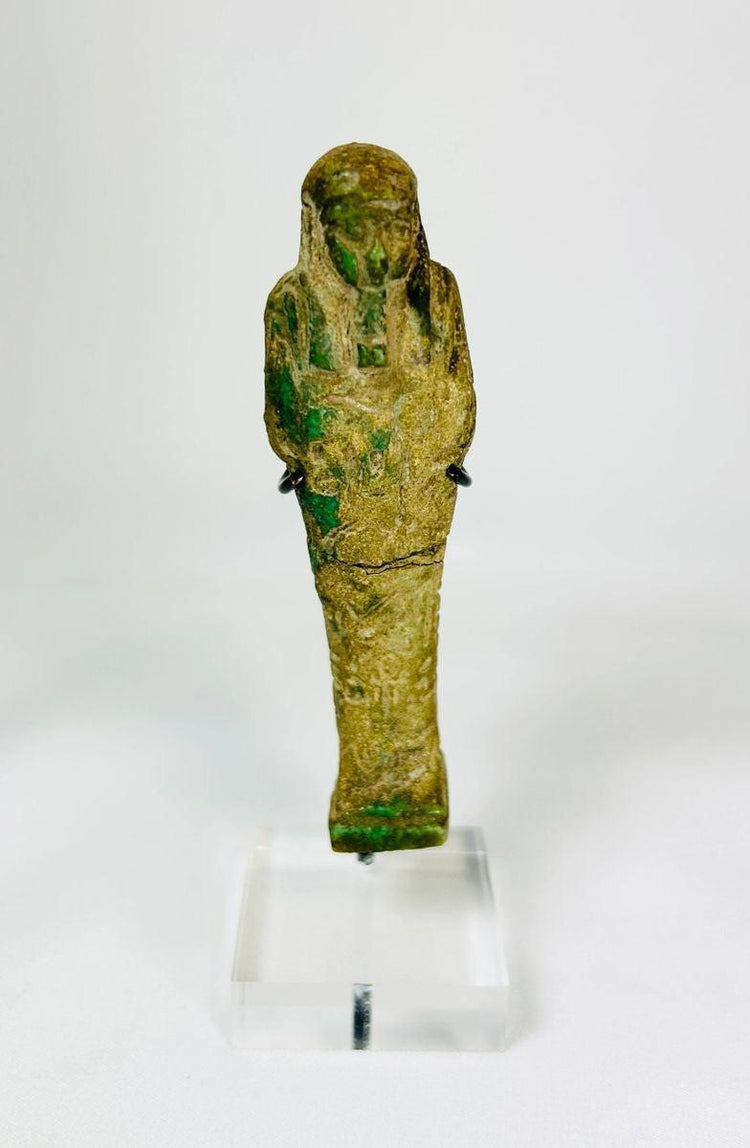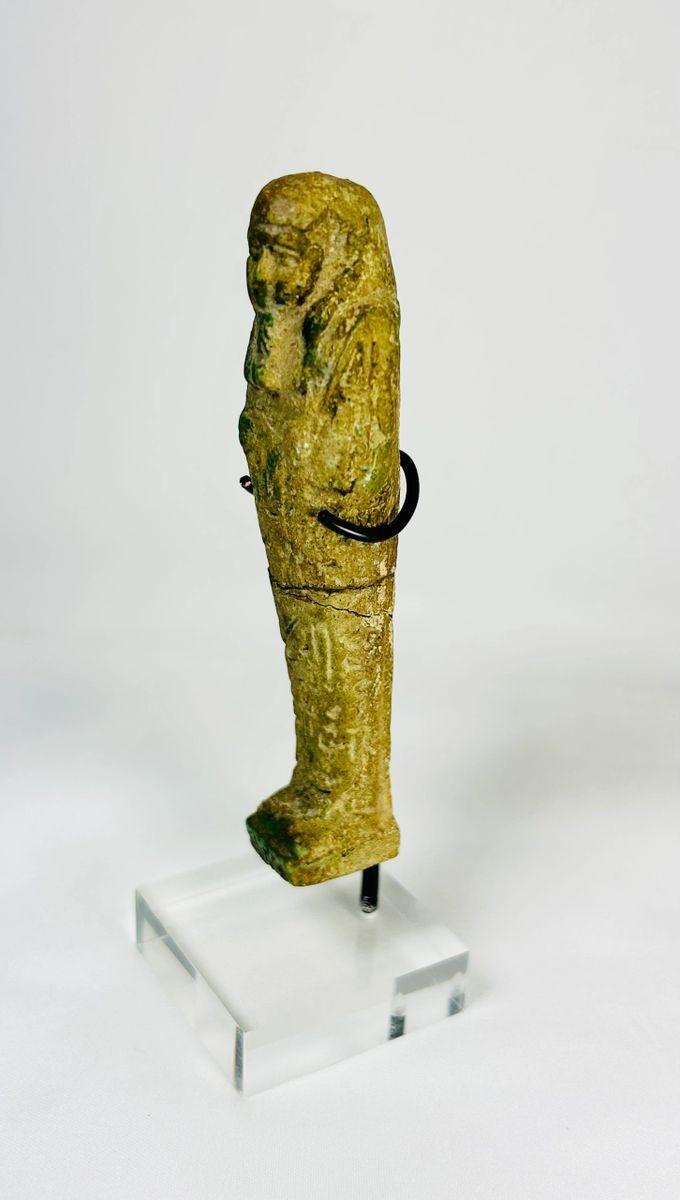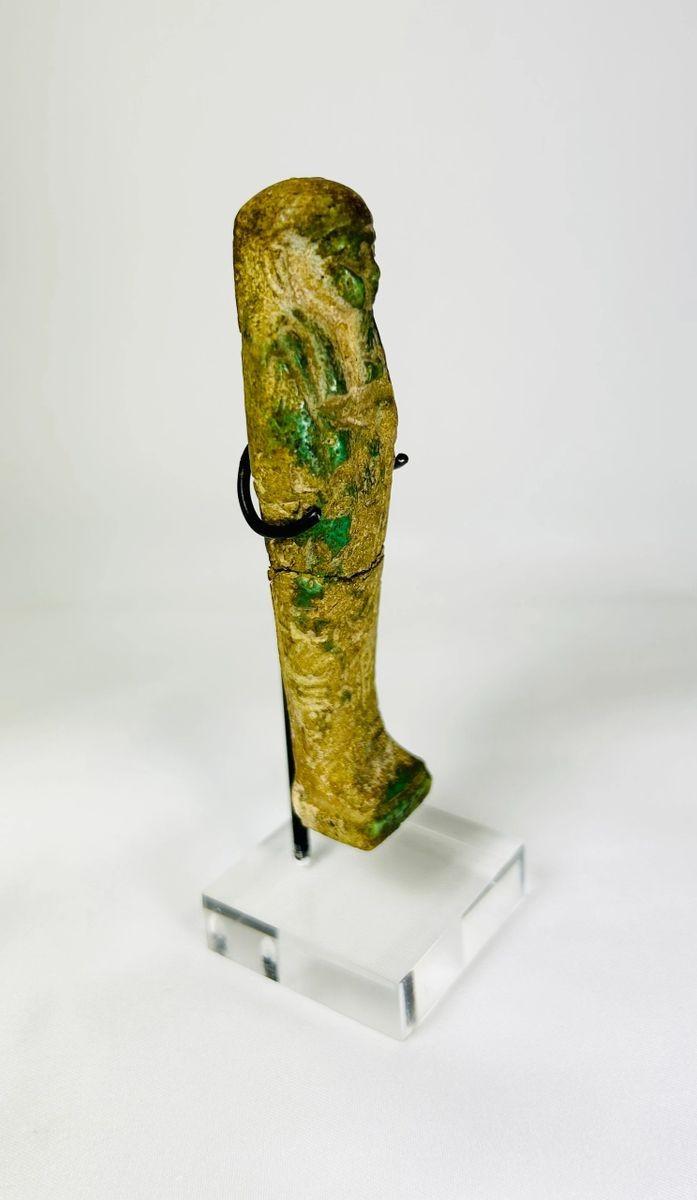Egyptian Green Glazed Faience Ushabti | Circa 712-223 BC
Description
More
Less
Historical Context & Origin
Region: Egypt
Material: Green glazed faience
Period: Late Period, circa 664–332 BCE
Description
This beautifully modeled Ushabti is crafted in mummiform style, a common form for funerary figurines in ancient Egypt. The figure wears a tripartite wig and a striated plaited beard, symbolizing its divine nature. The arms are crossed over the chest, holding a hoe and a pick, tools that represent its role in labor for the deceased in the afterlife. Horizontal bands of hieroglyphic inscriptions adorn the figure, emphasizing its readiness to serve when summoned by the gods.
Features
- Crafted from green glazed faience with a glossy finish
- Mummiform figure with tripartite wig and divine beard
- Arms crossed, holding hoe and pick for agricultural labor in the afterlife
- Hieroglyphic inscriptions symbolizing service and devotion
- Compact and finely detailed, with traces of age and wear
Cultural Significance
Ushabtis (also known as shabtis) were an integral part of Egyptian funerary practices. They were placed in tombs as servants for the deceased, meant to perform agricultural or manual tasks on their behalf in the afterlife. The use of faience, with its vivid green-blue glaze, symbolized regeneration, life, and rebirth, aligning with the Egyptians’ profound connection to the cycles of life and death. These figures embody both artistic craftsmanship and deeply held spiritual beliefs, providing insight into the religious practices of one of the world’s greatest ancient civilizations.
Condition
Good condition, with one stabilized crack repair consistent with the age of the piece. Surface retains glaze with minor wear from burial. Hieroglyphic inscriptions remain visible and legible, enhancing the authenticity and cultural value of the artifact.
Dimensions
Height: 4.75 in
Age
Circa 664–332 BCE
Learn More
Learn about ancient Egyptian ushabti figurines and their role in funerary beliefs: Ushabti Figurines in Ancient Egyptian Afterlife Beliefs
Explore authentic ushabti figures and related artifacts in our collection: Browse Ushabti Figures at Relic & Rarity
Description
Historical Context & Origin
Region: Egypt
Material: Green glazed faience
Period: Late Period, circa 664–332 BCE
Description
This beautifully modeled Ushabti is crafted in mummiform style, a common form for funerary figurines in ancient Egypt. The figure wears a tripartite wig and a striated plaited beard, symbolizing its divine nature. The arms are crossed over the chest, holding a hoe and a pick, tools that represent its role in labor for the deceased in the afterlife. Horizontal bands of hieroglyphic inscriptions adorn the figure, emphasizing its readiness to serve when summoned by the gods.
Features
- Crafted from green glazed faience with a glossy finish
- Mummiform figure with tripartite wig and divine beard
- Arms crossed, holding hoe and pick for agricultural labor in the afterlife
- Hieroglyphic inscriptions symbolizing service and devotion
- Compact and finely detailed, with traces of age and wear
Cultural Significance
Ushabtis (also known as shabtis) were an integral part of Egyptian funerary practices. They were placed in tombs as servants for the deceased, meant to perform agricultural or manual tasks on their behalf in the afterlife. The use of faience, with its vivid green-blue glaze, symbolized regeneration, life, and rebirth, aligning with the Egyptians’ profound connection to the cycles of life and death. These figures embody both artistic craftsmanship and deeply held spiritual beliefs, providing insight into the religious practices of one of the world’s greatest ancient civilizations.
Condition
Good condition, with one stabilized crack repair consistent with the age of the piece. Surface retains glaze with minor wear from burial. Hieroglyphic inscriptions remain visible and legible, enhancing the authenticity and cultural value of the artifact.
Dimensions
Height: 4.75 in
Age
Circa 664–332 BCE
Learn More
Learn about ancient Egyptian ushabti figurines and their role in funerary beliefs: Ushabti Figurines in Ancient Egyptian Afterlife Beliefs
Explore authentic ushabti figures and related artifacts in our collection: Browse Ushabti Figures at Relic & Rarity
You May Also Like




















